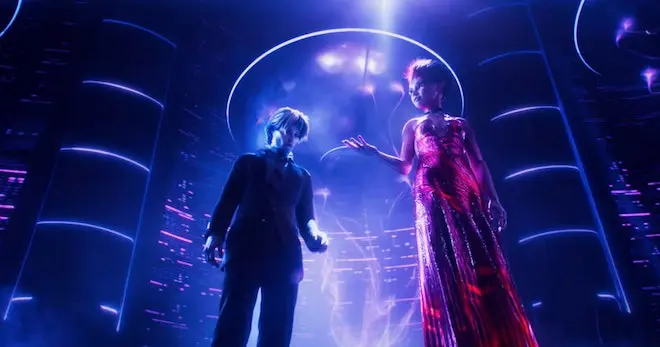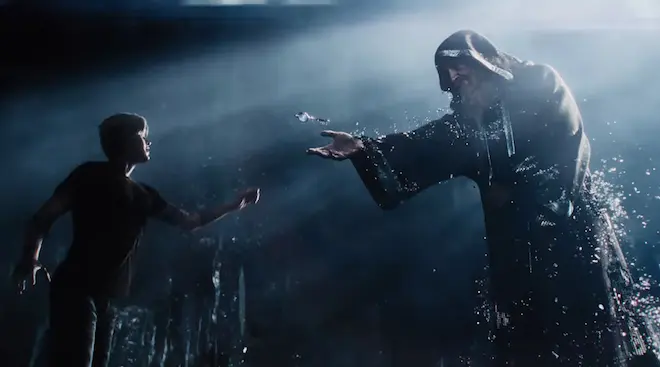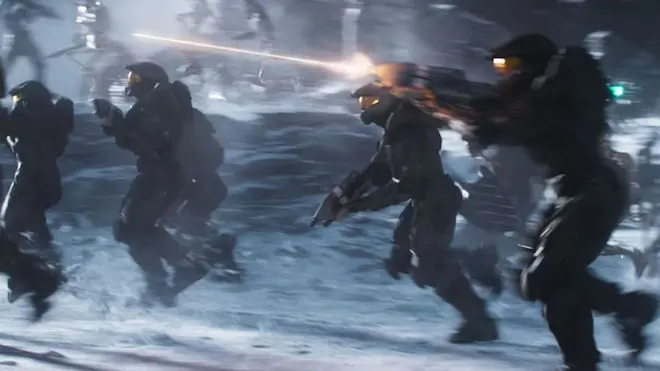Ready Player One is a fantastic ride through the looking glass of a possible future; a future that is much closer than people think. Steven Spielberg has tapped the wide spectrum of pop culture for the last 40 years, and based on Ernest Cline’s best selling novel, he has presented a tale that resonates with the geek culture, the gamer culture, and just culture in general.
A lot can be said about the sheer number of cultural references in Ready Player One, but if that’s your only takeaway here, you kind of missed the point. At its heart, Ready Player One is about humanity and doing whatever you can, overcoming every obstacle, to protect that humanity. The future is here, and as VR becomes more and more accessible, and massive multiplayer on-line gaming grows from seedy internet cafes to living rooms across the world, we are more connected than ever.
This film, and Ernest Cline’s book before it, is a cautionary tale of what happens when humanity gives up. If you give in, and live your life through an online avatar, who are you really? A seven-foot cyborg with a huge collection of cool artifacts? Blanka from Street Fighter II? Freddy Krueger? Or maybe a socially awkward kid who fears for his life in the soulless run down outside world, and finds escape in the OASIS?
Ready Player One is the story of one such kid named Wade (Tye Sheridan), who lives in the stacks in Columbus, Ohio, and exists solely to spend all his time in the OASIS, a VR world created by James Halliday, a genius game designer played by Academy Award-winner Mark Rylance. Wade, through his avatar, Parzival, has few friends in or out of the OASIS, and he spends all his time trying to solve the greatest mystery ever.
Halliday, before his death, hid three keys in the OASIS, and created a special challenge that is open to every player in the virtual world. Halliday declared that whoever finds all three keys would win a fortune, and even control of the OASIS itself. Because of that, a shady corporation headed by Nolan Sorrento (Ben Mendelsohn) seeks to gain control over the program so they can milk every user for every little thing in the game. Think constant ads and loot boxes, nothing but loot boxes. Sorrento throws his company’s resources toward finding the keys, and Parzival and his fellow players, Art3mis (Olivia Cooke), Aech (Lena Waithe), as brothers Daito (Win Morisaki) and Sho (Philip Zhao), must work together to stop them.
For a film about the not-too-distant future, a future where virtual reality technology reigns supreme over all of humanity, Ready Player One manages to capture some very human emotional elements. James Halliday (Rylance) is a social outcast with some deep seeded anxiety issues. Whereas Cline wrote him in the book as a genius who knew he was the smartest man on the planet, and flexed that scope of knowledge in his little game-within-a-game, Rylance plays the role differently, adding levels of awkward human interactions, as a man struggling to fit in in a world that doesn’t understand him. I felt sorry for the film Halliday and my heart ached because of his social failings, one of which becomes a huge plot point in the film.
This is but one of the many changes from the page to the screen which makes the story better, and Cline — who wrote the script with Zak Penn — seems to be able to fix things from the original novel to better represent humanity in its state of hopelessness, where people live in a virtual world and interact with avatars instead of human beings. And there are a great many differences from the book to the film, so know that going in. Luckily, they all seem to work to create a better narrative, and to truly highlight the disparity between the real world and the gamer world, and the attraction one has over the other. And as a pretty hardcore gamer in 2018 myself, this is apparently the path we are on. And Cline and Penn and Spielberg nail it perfectly.
Ready Player One is also a heady spectacle that demands to be watched on an IMAX screen in 3D. And not just once. There is so much going on in just about every scene inside the OASIS that multiple viewing are required to truly take it all in. Spielberg and Warner Bros. pulled out all the stops in filling the screen with stuff to see. Ready Player One is this generation’s Who Framed Roger Rabbit?, and the climatic battle in the third act serves as the virtual smorgasbord of four decades of geekdom all coming together. Where else can you see a platoon of Master Chiefs from HALO — not just Spartans, but full-on Master Chiefs — battling alongside a modified Iron Giant and Chucky, from the Child’s Play horror franchise, to take on Mecha-Godzilla?! My brain ached from the visual goodness on screen, and the sheer weight of the battle was felt by the audience in my screening. There were laughs and cheers and gasps, oh there were gasps.
It is perhaps fitting that Steven Spielberg was tapped to direct this film, as Ernest Cline wrote the book almost as a love letter to the career of the famed director. And Ready Player One is Spielberg’s best genre film since Jurassic Park, hands down. His sense of blocking and shot selection, coupled with his knowledge of special effects create on helluva film ride that takes audiences on an epic journey for what is truly a battle for our humanity. Ready Player One will be remembered for the spectacle and the references, but it’s important not to forget the humanity at play here too. Because if we forget our humanity, who are we really? And that might be the biggest lesson in the film.
Ready Player One is rated PG-13 and is in theaters on March 29.








